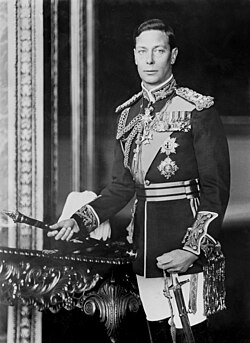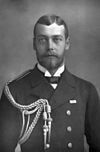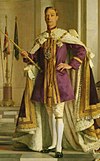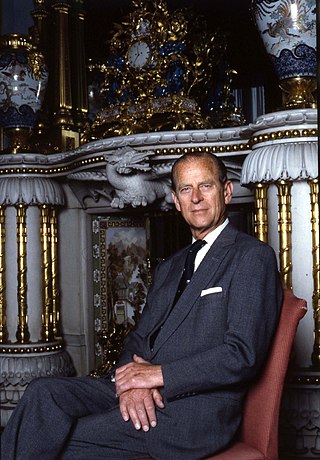
Duke of Edinburgh, named after the city of Edinburgh in Scotland, was a substantive title that has been created three times since 1726 for members of the British royal family. It does not include any territorial landholdings and does not produce any revenue for the title holder.

Duke of York is a title of nobility in the Peerage of the United Kingdom. Since the 15th century, it has, when granted, usually been given to the second son of English monarchs. The equivalent title in the Scottish peerage was Duke of Albany. However, King George II and King George III granted the titles Duke of York and Albany.

Duke of Gloucester is a British royal title, often conferred on one of the sons of the reigning monarch. The first four creations were in the Peerage of England and the last in the Peerage of the United Kingdom; the current creation carries with it the subsidiary titles of Earl of Ulster and Baron Culloden.
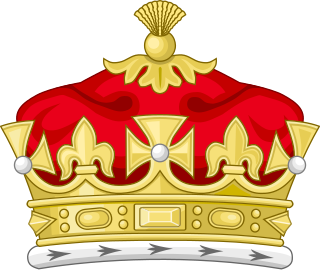
Duke of Clarence is a substantive title which has been traditionally awarded to junior members of the British Royal Family. All three creations were in the Peerage of England.

Duke of Cambridge, one of several current royal dukedoms in the United Kingdom as of 2022, is a hereditary title of specific rank of nobility in the British royal family. The title is heritable by male descendants by primogeniture, and has been conferred upon members of the British royal family several times.

The title of Earl of Athlone has been created three times.

Adolphus Cambridge, 1st Marquess of Cambridge,, born Prince Adolphus of Teck and later the Duke of Teck, was a relative of the British Royal Family, a great-grandson of King George III and younger brother of Queen Mary, the wife of King George V. In 1900, he succeeded his father as Duke of Teck in the Kingdom of Württemberg. He relinquished his German titles in 1917 to become Marquess of Cambridge.
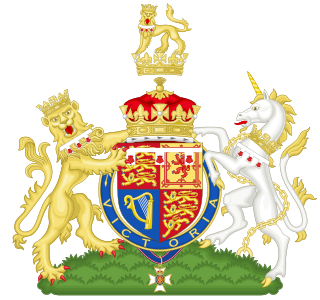
Duke of Sussex is a substantive title, one of several royal dukedoms, that has been created twice in the Peerage of the United Kingdom. It is a hereditary title of a specific rank of nobility in the British royal family. It takes its name from the historic county of Sussex in England.

Marquess of Cambridge was a title that was created twice, once in the Peerage of England and once in the Peerage of the United Kingdom.

Baron Arklow was a title in the Peerage of the United Kingdom that has been created twice. Arklow is a town in County Wicklow in Ireland.
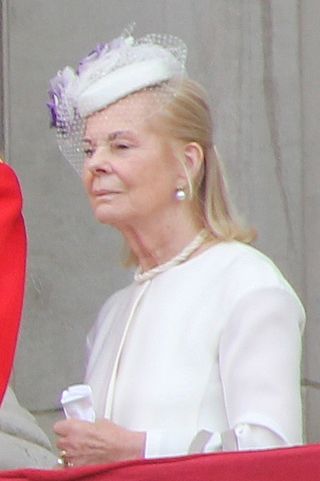
Duchess of Kent is the principal courtesy title used by the wife of the Duke of Kent. There have been four titles referring to Kent since the 18th century. The current duchess is Katharine, the wife of Prince Edward. He inherited the dukedom on 25 August 1942 upon the death of his father, Prince George, the fourth son of George V.

Baron Killyleagh is a title in the Peerage of the United Kingdom. It was created on 23 July 1986 by Queen Elizabeth II as a substantive title for her son Prince Andrew, Duke of York, for the occasion of his marriage to Sarah Ferguson. The couple were married at Westminster Abbey.
Baron Greenwich was a title that has been created twice in British history.

The title of Earl of Inverness was first created in 1718 in the Jacobite Peerage of Scotland, together with the titles Viscount of Innerpaphrie and Lord Cromlix and Erne, by James Francis Edward Stuart for the Honourable John Hay of Cromlix, third son of the 7th Earl of Kinnoull. He was created Duke of Inverness in 1727, but both titles became extinct upon the death of the grantee in 1740.
Earl of Dublin is a title that has been created three times in British and Irish history.

Earl of Munster was a title created twice, once in the Peerage of Ireland and once in the Peerage of the United Kingdom. The first creation came in 1789 in favour of Prince William, the third son of King George III. He was made Duke of Clarence and St Andrews at the same time. When William succeeded to the throne as King William IV in 1830 the titles merged with the crown.
In the British peerage, a royal duke is a member of the British royal family, entitled to the titular dignity of prince and the style of His Royal Highness, who holds a dukedom. Dukedoms are the highest titles in the British roll of peerage, and the holders of these particular dukedoms are princes of the blood royal. The holders of the dukedoms are royal, not the titles themselves. They are titles created and bestowed on legitimate sons and male-line grandsons of the British monarch, usually upon reaching their majority or marriage. The titles can be inherited but cease to be called "royal" once they pass beyond the grandsons of a monarch. As with any peerage, once the title becomes extinct, it may subsequently be recreated by the reigning monarch at any time.
